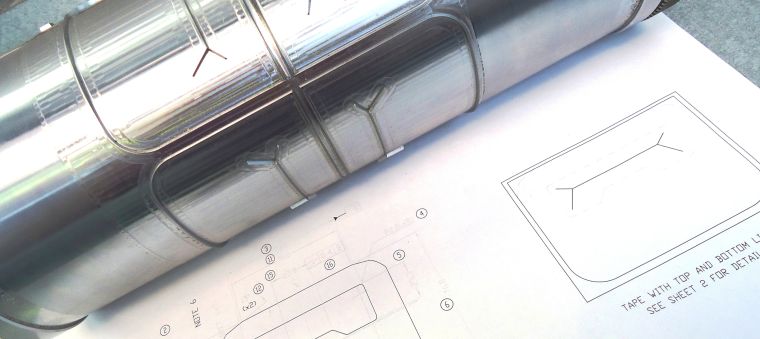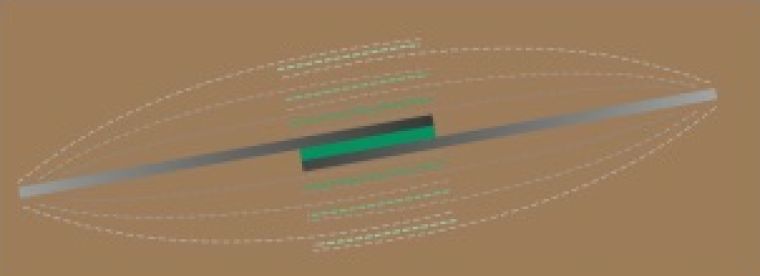Innovative product design and product enhancement details
Tapes offer a unique and sophisticated attachment method that is revolutionising product design. Using a tape in place of traditional fixing methods will improve the overall quality and performance of your product by providing a durable bond, even in the most demanding applications. Adhesive tapes and films offer many types of bonding, ranging from repositionable to permanent high strength with the capability of replacing rivets and welds. Tapes allow for reliable, consistent bonds that are not often possible using other techniques. Some automotive tapes used to bond hood emblems to the exterior of the car, for example, are more than a hundred times stronger than household wrapping tape. Some double-sided tapes, depending on the substrate, can offer a bond strong enough to take the weight of a full-grown person.
Below more details on the advantages of tape and films in product design and the enhanced product performance, showing some of the ways in which products are improved by the use of tapes and films.

New design freedom and options
Engage in the magic of the creative process with new design freedom in the countless functionalities and options available in tapes. Businesses in the tape industry know from frequent development journeys with product designers and engineers that adhesive tape is often the hidden driver that enables innovation in product design.
Use lighter, thinner materials
Use lighter, thinner and possibly fewer and less expensive materials without worrying about distortion, splitting, or crazing at the mechanically fastened site. Adhesive tapes use less space than traditional fixing methods, so your desired product weight, mass or size can be more easily achieved.

Improve appearance
When design is important, bonding tapes, which are generally hidden between the bonded substrates, offer virtually invisible fastening to keep surfaces smooth and clean, with no screws or rivet heads or protruding nuts and bolts. Picture supplied by 3M
Bond dissimilar materials
The number of materials which can be combined using traditional fixing technologies such as spot welds, rivets, screws and nails is limited. For instance, joining plastics and glass is usually not possible.
A vast range of material combinations can be bonded using tapes however. Adhesive tapes provide a solution for mismatch in coefficients of thermal expansion. They also provide a barrier or carry inhibitors to reduce or prevent bimetallic corrosion that often occurs between different types of metal.
Cheaper prototyping in the early stages of design
Often tape and film manufacturers and converters have in-house prototyping capabilities which enable designers and engineers to test and demonstrate your products before committing to full batch production. This leads to rapid prototyping, lower development costs, and the opportunity to test different materials and enhance designs before full production.

Creativity and efficiency
Where smart design and engineering meet, the possibilities are literally endless. Tape manufacturing and converting companies routinely work with product designers and architects on developing solutions to meet their customers’ needs while helping them cut costs, reduce waste and improve efficiency.
Some examples:
- Formulating adhesives to achieve agreed criteria on specific substrates, such as a clean peel after exposure to extreme temperatures, UV light and chemicals
- Adjusting unwind force to allow rapid application and ease of use
- Designing components to achieve the highest yield from the customer’s tape
- Designing a part with convenient application aids such as easy-to-remove liners or location aids for automated application of parts.
Picture supplied by Parafix
Durability and reliability
Adhesive tapes are used in a wide variety of environmentally challenging applications because they have been proven to resist stress corrosion, cracking and distortion when exposed to extreme temperatures and weather, UV and chemicals. This keeps your product looking younger for longer. Enhanced quality and life span means reduced returns and complaints, saving you money and contributing to a quality reputation.

Bond and seal, insulate, support, shield and/or conduct simultaneously
Continuous contact between surfaces bonded with tape helps keep out water, moisture, dust and other environmental factors. This additional sealing functionality reliably protects the internal parts of your product for a longer life. See the picture on the right of a bond and seal underwater camera housing with die-cut tape. Picture supplied by Parafix.
Tapes have also been developed to provide reliable insulation, mechanical support, aesthetic finishing, point-to-point electrical contact, grounding and EMI (electronics metal finishing) shielding.

Uniform stress distribution
Spot welds, rivets, screws, nails and other mechanical fasteners create single-joint stress points. Because the entire force is concentrated on one joint, this attachment can often fail and/or cause material breakage. Bonding tapes distribute stress evenly over the entire bonded area. Double-sided tapes are perfect for tension compensation.
By using tape, you can eliminate stress concentration that decreases substrate integrity. At the same time, get rid of the need for holes that invite rust and corrosion. Your products are stronger and longer-lasting.

Vibration damping and noise control
The viscoelasticity of many tapes improves resistance to vibration fatigue by adding flexibility to a joint or bonded area. They absorb and dissipate vibration and reduce noise and fatigue.
Creating a product which is protected against vibration and other concentrated stresses is every designer and manufacturer’s aim. Better products mean fewer complaints and product returns, saving on administration and replacement costs.
Picture supplied by 3M

